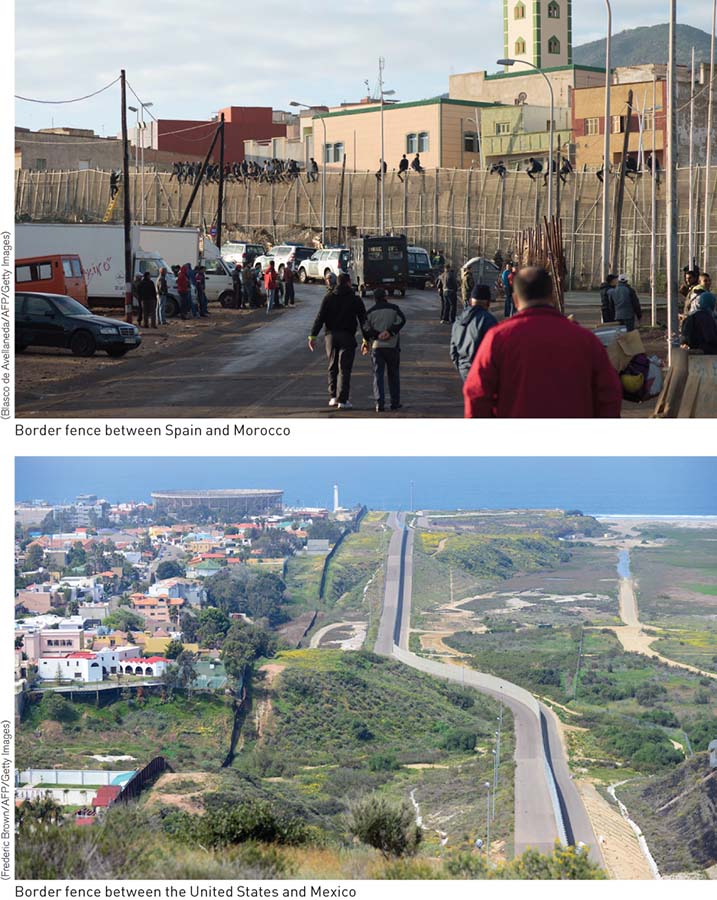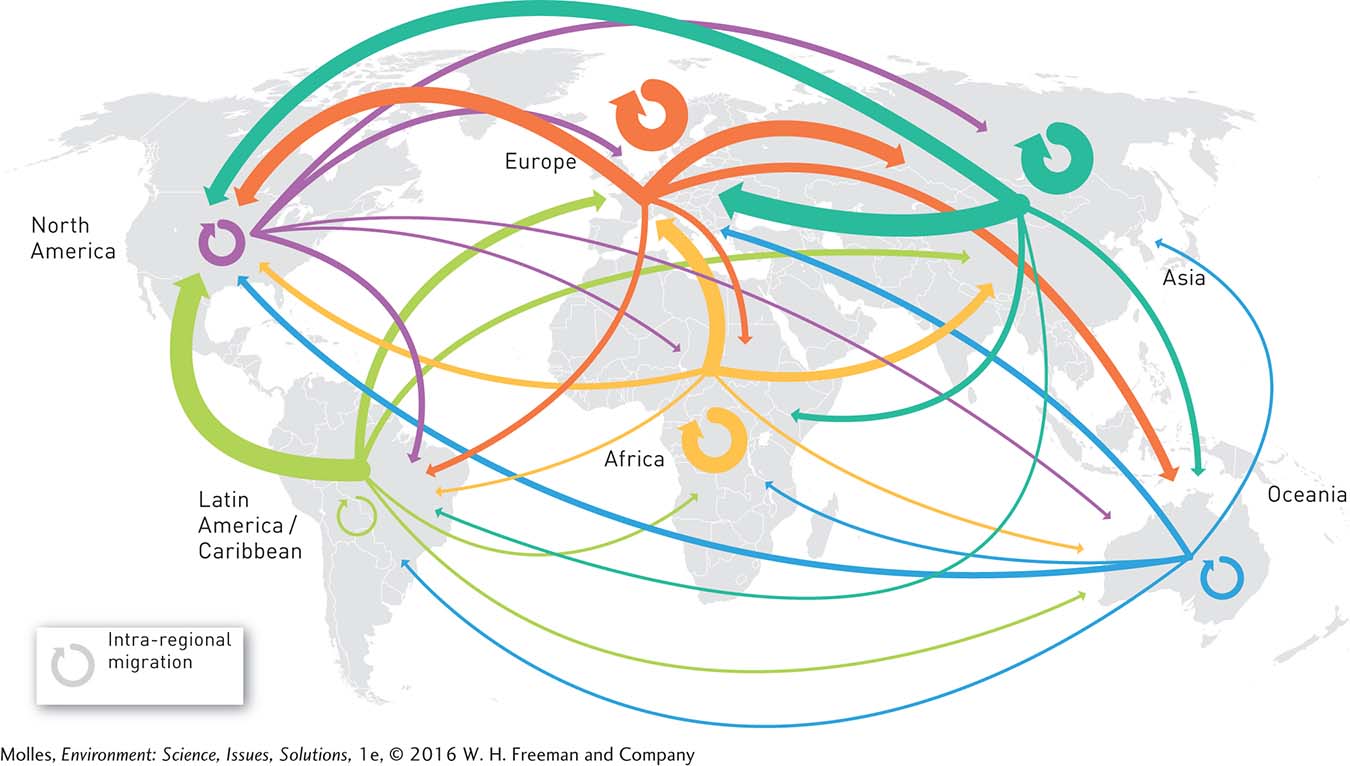5.7 Developmental differences between populations create migration pressures
The Statue of Liberty in New York Harbor is one of the most well-

140

How does one reconcile the aspirations of immigrants with the concerns of many residents in countries attracting high flows of immigrants?
These encounters among people, often with different cultures and languages, have commonly involved competition for land, jobs, and other resources. Consequently, immigration is one of the most sensitive and complicated issues related to human population dynamics, and history is filled with attempts to stop or control the flow of immigrants (Figure 5.16).

Migration and Population Dynamics
Today, migration augments population growth in some regions and contributes to population declines in other regions. The main sources of immigrants are poor countries in Asia, Latin America, the Caribbean, and Africa, whose principal destinations are rich countries in North America, Europe, Australia, and New Zealand (Figure 5.17). In the richest countries, the number of immigrant residents totaled over 111 million in 2013, or about 11% of the overall population. About 2.5 million people migrate from one country to another every year. Of this total, approximately 1 million, or 40%, legally immigrate to the United States. Another several hundred thousand persons per year illegally enter the United States. Most of the others go to Europe, Canada, or Australia.

High rates of immigration have been associated with some incidents of political and social conflict. In South Africa, for example, controversy over immigration from surrounding countries, both legal and illegal, exploded into widespread rioting and violence in 2008 and 2015. In the United States, a number of local governments and states frustrated by the number of illegal migrants have made life harder for immigrants by preventing them from getting driver’s licenses or arresting them when they cannot show proof of legal status. These legal moves have drawn opposition from the U.S. federal government and have become flashpoints for debate among political parties, citizen groups, and the U.S. Supreme Court (Figure 5.18).

Immigration policy in the United States is governed by the Immigration and Naturalization Act, which limits permanent immigrants to 675,000 annually. U.S. immigration policy has historically given priority to reuniting families, admitting immigrants with skills valuable to the U.S. economy and providing shelter to refugees. Many naturalized citizens, human rights groups, and business owners worried about their labor force have called for immigration policy reform.
Think About It
In setting immigration policy, what criteria can be used to screen immigrants? Are some criteria unethical? Explain your answers.
Do developed countries have an obligation to accept immigrants from developing countries with large populations? Do poor countries have a right to expect that rich countries will accept their immigrants?
141
5.4–5.7 Issues: Summary
Understanding the impact of a population on the environment requires an accurate measurement of its level of development. The United Nations incorporates life expectancy, wealth, and access to education into a single index of development called the Human Development Index, or HDI. The two main factors influencing its impact are the number of individuals in the population and the per capita consumption of natural resources. These effects can be summarized by the IPAT equation: I (environmental impact) = P (population) × A (affluence or resource consumption) × T (technology). Ecological footprints, which are on average higher in more developed countries, also quantify the impact of populations on the environment. Migration has had a significant influence on human populations throughout history. Today, migration augments the population growth of many countries, while contributing to population declines in others. Immigration can be a significant contributor to population growth trends and, in some situations, may lead to social conflict.